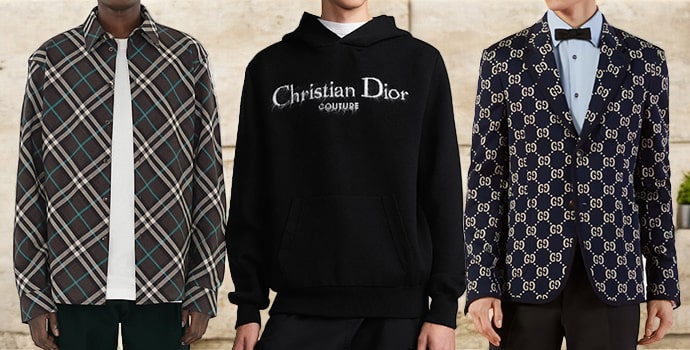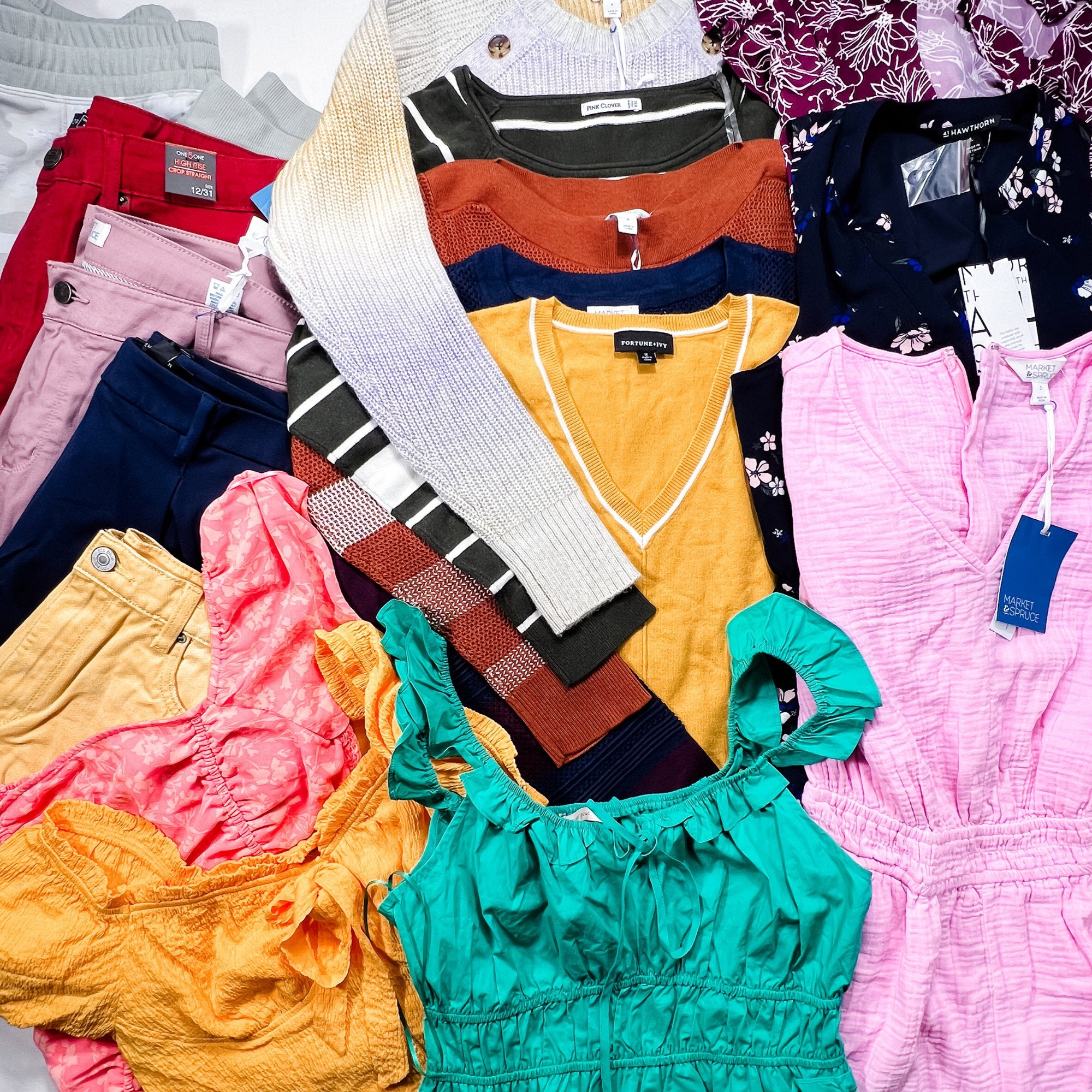Branded Clothing Maintenance Tips Based on Fabric Composition
Branded Clothing Maintenance Tips Based on Fabric Composition
Blog Article
The Importance of Sustainable Apparel: Just How It Impacts the Setting and Your Closet
Lasting garments is increasingly identified for its vital role in minimizing the ecological impact of the fast garment industry. By concentrating on environment-friendly materials and moral production approaches, it deals with pressing eco-friendly issues. This change not just profits the world but additionally influences customer selections, bring about a much more thoughtful strategy to wardrobe monitoring. Comprehending these dynamics increases essential questions regarding fashion's future and personal duty fit it.
The Environmental Impact of Fast Fashion

Advantages of Lasting Materials
Sustainable products offer substantial benefits, especially with green textile options that minimize ecological injury. These products additionally show resilience and durability, decreasing the need for constant replacements. Consequently, they contribute to an extra lasting fashion industry and advertise accountable consumer actions.
Eco-Friendly Material Choices
While the fashion sector has actually long been related to rapid trends and ecological injury, the surge of eco-friendly textile options provides a transformative possibility. Lasting materials such as natural cotton, hemp, and Tencel have gained popularity due to their lower ecological impact. These textiles are typically created without dangerous pesticides and call for less water, reducing their carbon footprint - Branded Clothing. In addition, numerous eco-friendly textiles are eco-friendly, contributing to a round economy by lessening waste. Picking lasting materials not just supports ecologically responsible practices however additionally advertises healthier ecological communities. As customers come to be a lot more familiar with their buying power, the demand for green textiles encourages brands to introduce and take on more lasting production methods, ultimately profiting the earth and future generations
Durability and Long Life Advantages
Several customers are progressively acknowledging the resilience and durability advantages of lasting materials in their clothes choices. Unlike traditional materials, sustainable products such as natural cotton, hemp, and recycled polyester are engineered to hold up against wear and tear, resulting in garments that last much longer. This minimized frequency of substitute not just conserves customers money in time but also diminishes waste created by quick fashion. In addition, sustainable garments frequently utilizes environment-friendly manufacturing techniques that improve fabric toughness, adding to a decrease in the total carbon impact. By investing in long lasting clothing, consumers can cultivate a more lasting wardrobe while delighting in high-grade pieces that preserve their aesthetic and functionality over time. As a result, longevity and durability stand as essential benefits of selecting lasting products.
Minimizing Waste Via Sustainable Practices
Minimizing waste in the garment industry can be attained via ingenious techniques such as upcycling and repurposing products. Additionally, taking on minimalist wardrobe techniques urges customers to focus on top quality over amount, ultimately reducing apparel intake. With each other, these methods add greatly to a more lasting clothing design.
Upcycling and Repurposing Materials
Upcycling and repurposing materials have actually become ingenious methods in the apparel industry, transforming discarded fabrics right into valuable brand-new products. This strategy not only reduces waste yet also motivates creativity and originality in clothing layout. By taking old garments and materials, developers can develop unique items that reflect personal design while minimizing the demand for brand-new sources. Furthermore, upcycling commonly requires less power and water compared to typical manufacturing procedures, substantially lowering the environmental impact of fashion. As consumers end up being much more familiar with sustainability, the appeal of upcycled apparel remains to increase, advertising a round economy. Ultimately, these practices contribute to a much more lasting future, where style prioritizes environmental health and wellness over rapid production and consumption.

Minimal Closet Approaches
As individuals progressively look for to minimize their environmental influence, taking on minimalist wardrobe methods has actually acquired traction as an effective method to sustainable fashion. These strategies stress top quality over amount, motivating consumers to curate a smaller sized collection of flexible, resilient clothes. By focusing on timeless pieces that can be combined and matched, people can minimize the frequency of purchases and eventually lower waste.Additionally, minimalism promotes conscious usage, urging buyers to reflect on the environmental and moral ramifications of their selections. This approach not only cultivates an extra sustainable lifestyle however likewise streamlines daily decision-making pertaining to attire. As individuals embrace minimal concepts, they add to a fashion culture that values sustainability and accountable consumerism, eventually resulting in a much more eco-conscious society.
The Duty of Moral Labor in Sustainable Style
While lots of consumers are significantly knowledgeable about the environmental consequences of their apparel selections, the importance of moral labor methods in lasting fashion can not be forgotten. Ethical labor includes fair incomes, safe working problems, and respect for employees' civil liberties, creating the foundation of accountable fashion production. Brand names that focus on ethical labor not only uplift communities but also set a requirement for accountability in the industry.Moreover, the integration of ethical methods fosters openness, enabling consumers to make enlightened selections regarding their acquisitions. This practice contrasts sharply with fast style's unscrupulous labor designs, which usually focus on profit over people. By supporting companies committed to moral labor, customers contribute to a system that values human self-respect alongside environmental sustainability. Subsequently, honest labor is not merely an add-on; it is vital to the wider mission of lasting style, ensuring that the pursuit for eco-friendliness does not come at the cost of human legal rights.
The Impact of Sustainable Apparel on Carbon Emissions
Lasting apparel has the possible to significantly decrease carbon exhausts related to the garment industry. Traditional garment production contributes notably to greenhouse gas emissions, primarily as a result of energy-intensive production procedures and making use of non-renewable sources. In contrast, lasting style concentrates on eco-friendly materials, such as organic cotton or recycled fibers, which often require less energy to produce.Moreover, sustainable brand names tend to take on much more efficient production practices, reducing waste and lowering total emissions. By focusing on toughness and timeless layout, lasting clothing urges consumers to acquire less regularly, more lowering the carbon footprint connected with overconsumption.Additionally, numerous sustainable brands are dedicated to transparency in their supply chains, allowing customers to make educated selections that align with their worths. Eventually, shifting official site in the direction of sustainable garments can lead to a substantial reduction in carbon exhausts, adding to a much healthier world and a more lasting future for the apparel industry.
Supporting Neighborhood Economic Climates With Lasting Options
The change towards lasting garments not just addresses environmental issues however additionally considerably benefits neighborhood economic climates. By selecting sustainable fashion, customers frequently support regional craftsmens and local business, improving area strength. These ventures typically operate a smaller scale, prioritizing craftsmanship and ethical practices over mass production.Investing in locally made sustainable clothing fosters job development and boosts financial development within neighborhoods. As consumers become a lot more mindful of the ecological influence of their purchases, they progressively look for out products that reflect their values. This demand motivates neighborhood manufacturers to take on sustainable practices, contributing to a circular economy.Moreover, sustaining local services reduces transport exhausts, straightening with eco-conscious customer actions. The interconnectedness of sustainable apparel and local economies emphasizes the necessary role that private choices play in advertising both ecological and financial wellness. By fostering these neighborhood links, areas can prosper while also functioning towards a more lasting future.
Changing Your Wardrobe: Tips for a Sustainable Wardrobe
As people seek to decrease their ecological impact, changing a closet into a sustainable closet ends up being a crucial action. One effective method is to assess existing apparel, keeping just items that are put on consistently which align with sustainability objectives. Prioritizing top quality over quantity is essential; purchasing sturdy pieces from green brands can substantially decrease waste.Additionally, including pre-owned things can breathe new life right into a wardrobe while lessening environmental damage. Organizing clothes swaps with friends or contributing unused products can better promote sustainability.When buying, individuals must look for products that are organic, recycled, or naturally degradable, and stay clear of fast fashion stores - Branded Clothing. Finally, practicing conscious intake by thoughtfully taking into consideration each acquisition can add to a much more lasting way of living. By carrying out these pointers, one can develop a closet that mirrors individual design while sustaining ecological stewardship
Regularly Asked Inquiries
Exactly How Can I Determine Lasting Clothing Brands?
To recognize lasting clothing brand names, one need to look into products utilized, check for accreditations like Fair Trade, and examine the brand name's openness about their production processes, labor techniques, and ecological effect, making certain moral and eco-friendly techniques are prioritized.
What Are the Costs Connected With Sustainable Fashion?
The expenses associated with sustainable style can differ significantly. Higher production costs, moral click here to find out more sourcing, and green materials often lead to increased market prices, which might discourage some customers while interesting ecologically conscious buyers.
Can Sustainable Clothing Be Fashionable and elegant?
Sustainable garments can certainly be stylish and trendy. Developers progressively focus on cutting-edge materials and honest manufacturing techniques, proving that fashion and sustainability can exist side-by-side. Consumers currently have varied alternatives that mix looks with environmental awareness.
Just How Does Washing Garments Affect Their Sustainability?
Washing clothing greatly effects sustainability by consuming water and power, contributing to air pollution, and causing microplastic release. Constant washing can deteriorate textiles, shortening their life expectancy and increasing the requirement for substitutes, ultimately aggravating environmental concerns.
What Is the Lifespan of Sustainable Apparel Compared to Quick Style?
The lifespan of sustainable garments usually goes beyond that of rapid fashion products, frequently long-term several years because of top quality products and workmanship. In contrast, quick fashion garments may break down rapidly, requiring even more frequent replacements. Lasting apparel is increasingly acknowledged view it for its essential role in decreasing the environmental influence of the fast style market. While lots of customers are progressively mindful of the ecological consequences of their clothing options, the value of ethical labor practices in sustainable style can not be forgotten. Branded Clothing. Sustainable clothing has the potential to greatly minimize carbon exhausts connected with the fashion industry. In comparison, lasting style focuses on eco-friendly materials, such as organic cotton or recycled fibers, which usually require less energy to produce.Moreover, lasting brands often tend to take on a lot more effective manufacturing techniques, decreasing waste and reducing total exhausts. By prioritizing resilience and classic style, sustainable clothing urges consumers to buy much less often, additional decreasing the carbon footprint connected with overconsumption.Additionally, lots of sustainable brands are devoted to transparency in their supply chains, making it possible for consumers to make educated choices that straighten with their values
Report this page